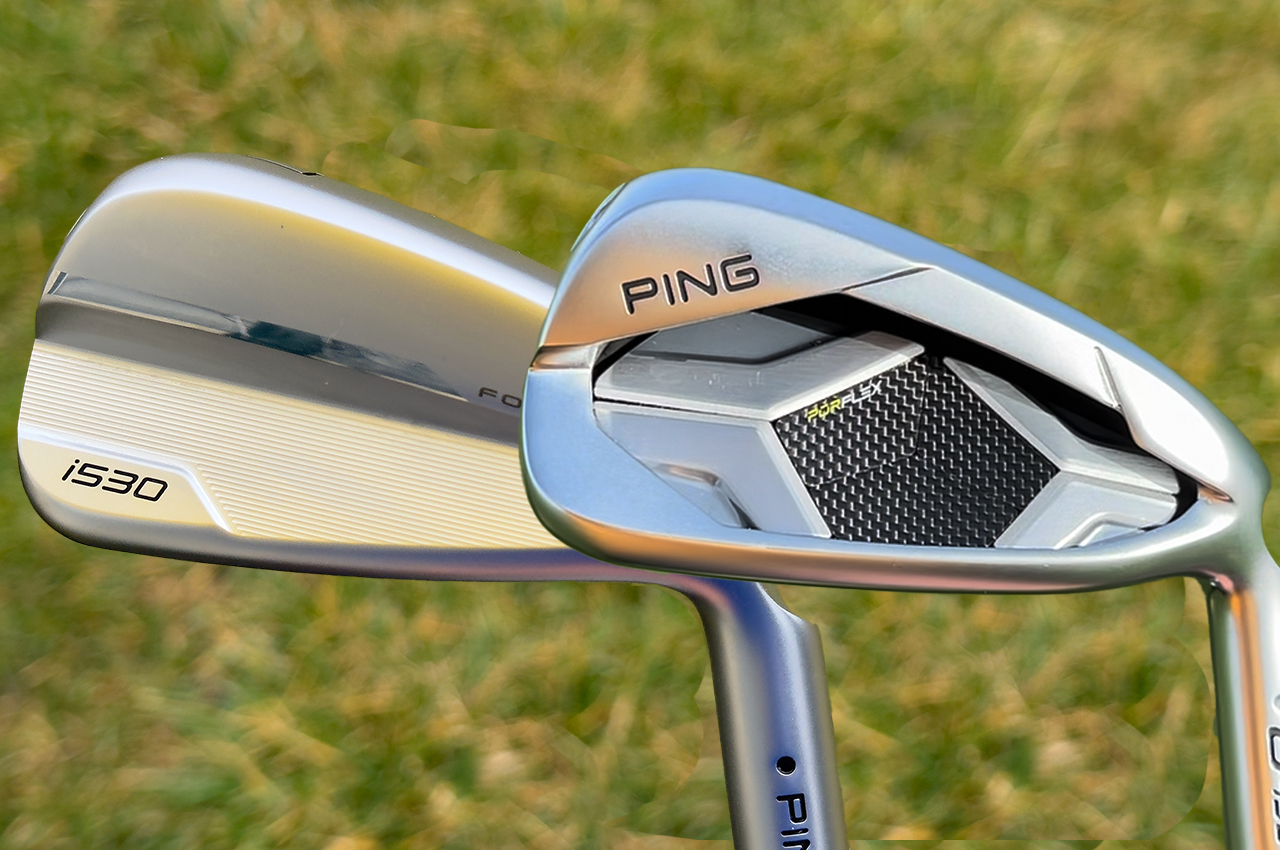When it comes to selecting the right irons, Ping offers plenty of choices that cater to wide a range of golfers, from elite ball strikers who can benefit from the control and feel of the Blueprint T and the Blueprint S to high-handicap golfers who can take advantage of the forgiveness of the G730.
Two popular options in the middle of Ping’s iron lineup are the G430 and i530. Both clubs were designed using advanced technologies and materials, and there is some overlap in the type of players who might gravitate to these irons, but they serve different needs on the course. So, let’s break down how the G430 and i530 are similar, how they differ, and discuss which players might find the most benefit from each set.
Construction and technology
Released in 2023, the G430 irons feature cast 17-4 stainless steel heads htat have been given a unique heat treatment that strengthens the steel. That allowed designers to make the hitting area thinner and lighter. Ping also lowered the center of gravity (CG) by adding a tungsten weight in the heel and a tungsten screw to the toe. That added mass makes the G430 less likely to twist on off-center hits for increased consistency.

The G430 has a tungsten screw in the toe and a new back badge designed to allow the face to flex more efficiently. (David Dusek/Golfweek)
The G430 was also created with a new back badge called PurFlex. It has seven different pieces that deliver varying levels of stiffness. Ping’s engineers learned that dividing the badge instead of uses a single large piece, it encouraged more face flex while still absorbing excessive vibrations to improve sound and feel.
Released in 2024, the i530 has a hollow-body design that is similar to the design of Ping’s metalwoods. The thin, forged C300 maraging steel face is welded to the 17-7 stainless steel body, which creates a hollow chamber inside the head. This hollow-body design allows the hitting area to flex more efficiently at the moment of impact, so golfers can generate more ball speed and distance.

The i530 has a wider sole than Ping’s Blueprint T or Blueprint S, but it should help a variety of players work in and out of the turf more easily. (David Dusek/Golfweek)
On the inner-facing side of the face, Ping added a polymer piece that soaks up vibrations without inhibiting face flex or dropping ball speed. In addition to weights in the heel and toe, an internal mass pad helps to lower the CG location.
Ping also designed the i530 with MicroMax grooves, so the hitting area is more tightly packed with grooves to help the irons generate more spin.
Both the G430 and the i530 have Ping’s Hydropearl 2.0 finish, a technology that helps to keep water off the face for more consistency.
Size and performance
The Ping G430 has a longer blade length than the i530, to go along with a slightly thicker topline and wider sole. Working in complement with the addd weight in the heel and toe, the added size helps to boost the moment of inertia (MOI) of the G430 and make it more stable on mis-hit shots. The larger size also helps to lower the CG location and encourage a higher ball flight.

The i530 has moderate offset and a relative-thin topline. (David Dusek/Golfweek)
The i530 has a more-compact size than the G430, with a shorter blade length, thinner topline and narrower sole. The extra weight added in the heel and toe boost the MOI, but in the case of the i530, Ping wanted more stability without increasing the size.
The lofts of the G430 and i530 are identical, with the 5-irons at 22 degrees and the 9-irons at 37 degrees. However, the standard pitching wedge loft of the G430 is 41 degrees while the i530 pitching wedge comes standard at 42 degrees. Both sets are available in Ping’s Power Spec, which features stronger lofts, and Retro Spec, which has weaker lofts.

The MicroMax grooves are packed more tightly in the hitting area to normalize spin in different conditions. (David Dusek/Golfweek)
Who are the G430 and i530 for?
The best way to find the irons that are right for you is to work with a custom fitter who has a launch monitor and hit shots with lots of different head and shaft combinations.
The G430 is for mid-to-high handicappers who want help getting the ball in the air and keeping it there. The larger head size, added perimeter weighting, and forgiving face make it ideal for golfers who prioritize consistency over shaping shots. If you shoot in the high 80s and 90s and want irons that can launch the ball high, reduce mishit penalties, and boost confidence from anywhere on the course, the G430 is something to consider.

Ping G430 irons. (David Dusek/Golfweek)
The i530 falls squarely into the better-player’s distance category. Its compact size, thinner topline and reduced offset will remind golfers who shoot in the high 70s and low 80s of muscleback blades and better-player irons they have used in the past, but the hollow-body design will generate more ball speed and distance than solid-body clubs made for low-handicap golfers.
The forged face and extra spin from the MicroMax grooves should also help skilled players hit draws, fades and other shots when they need to work the ball around the course.

